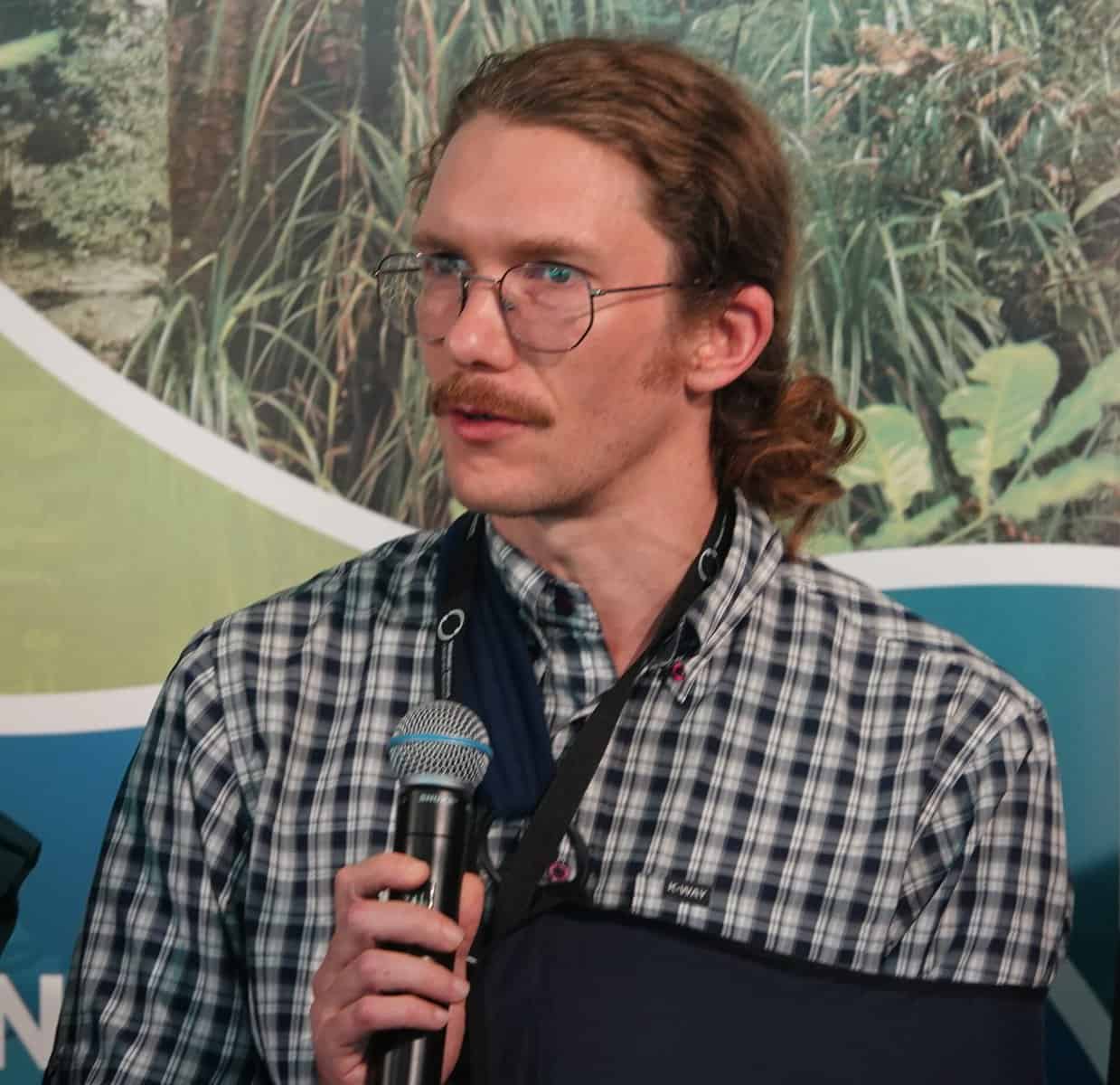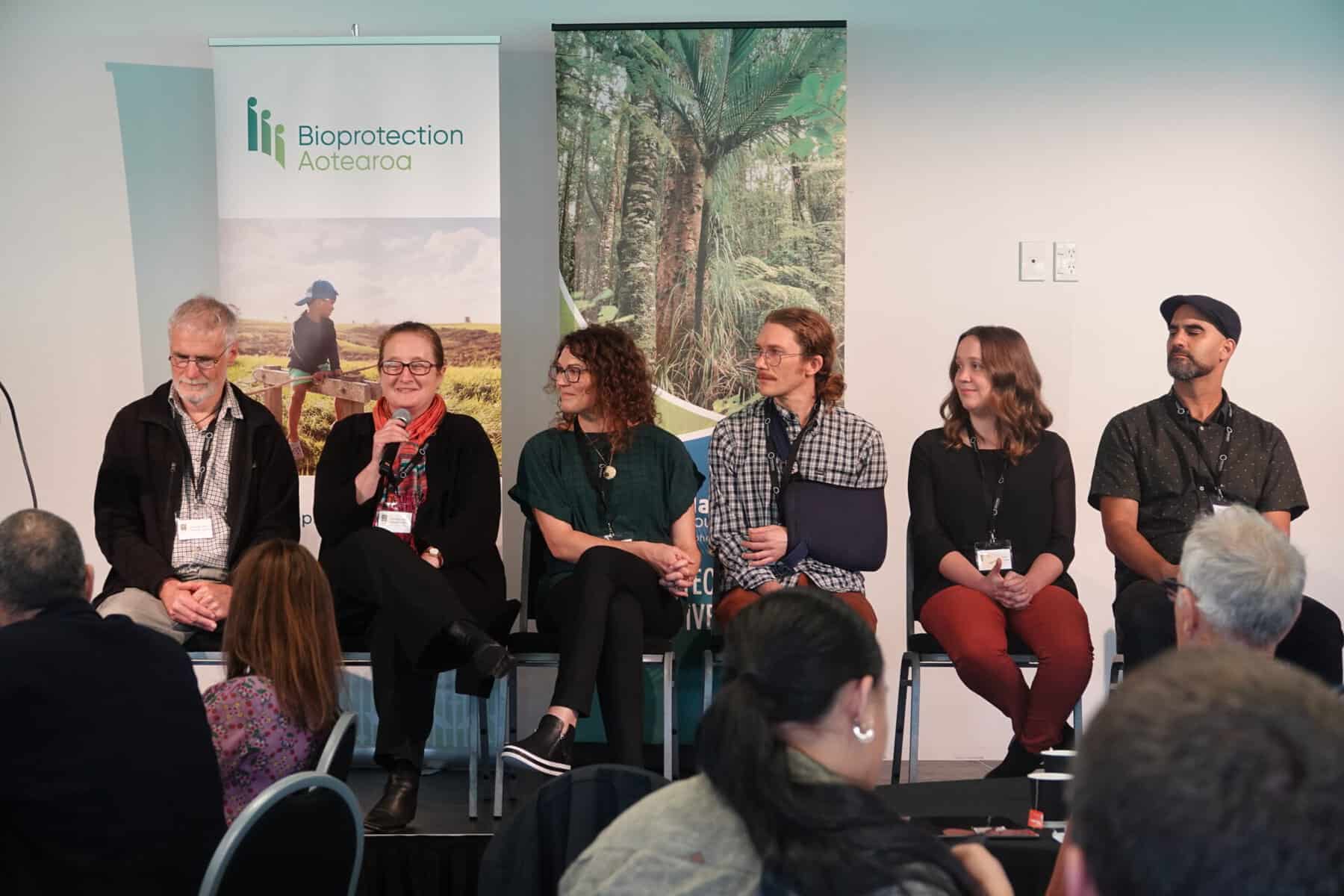One of the aims of conservation is to maintain the genetic diversity of the species being conserved. Genetic diversity helps safeguard the long-term survival of a species.
“The more diversity, the better a species is able to adapt to new environmental changes,” said Amy MacDonald, who recently completed her Master’s through Massey University.
When habitats are restored by sourcing seeds from easy to access trees or just a single mother tree, this often results in a huge loss in genetic diversity.
“In these cases, even if population size increases with time, we don’t see a corresponding increase in genetic diversity,” said Colan Balkwill, a PhD student at Te Herenga Waka – Victoria University of Wellington.
One tree that is actively being restored is maire tawake (Syzygium maire; swamp maire), which is classified as nationally critically threatened due to habitat loss and high susceptibility to myrtle rust.
With a hope of improving conservation outcomes for this species, Colan is aiming to develop a better understanding of maire tawake population genetics for his PhD. His first step was to construct a reference genome.

“Rangitāne O Manawatū are the kaitiaki for the genome of one tree that we’ve sequenced in their rohe. They are currently undergoing a naming process for this genome.”
Colan Balkwill
Next, Colan used this genome to look at the genetic relatedness of 301 adult trees from six broad areas: Te Tai Tokerau (Waipoua), Bay of Plenty, Taranaki, Manawatū, Taranaki, Greater Wellington, and Marlborough. This showed five clusters of closely related trees, with Manawatū and Greater Wellington forming one cluster.
Colan then examined the relatedness of individual trees by comparing the genetic similarity of each tree to every other tree. What he found was that trees are less related in Te Tai Tokerau (i.e. there is more genetic diversity) and more related in Marlborough (i.e. less diversity with more inbreeding).
This finding was echoed in Amy MacDonald’s research into ramarama (Lophomyrtus bullata), another species being threatened by myrtle rust. Ramarama is a species of shrub or small tree found around the North Island and the north-eastern corner of the South Island in lowland and coastal forests.
To investigate genetic diversity in ramarama, Amy collected samples from 20-25 individuals from each of 18 populations of ramarama across the distribution of the species. Samples were analysed using microsatellite markers, a tool that allows researchers to measure the genetic diversity and structure of a species.
As with maire tawake, Amy found higher genetic diversity for northern populations of ramarama and lower genetic diversity for southern populations.
“When this relationship was tested, it showed a significant, linear decline in genetic diversity as you move from north to south.”
Amy MacDonald
One possible explanation for this pattern is glacial cycling during the Pleistocene. Glaciers restricted forests to the upper reaches of the North Island. As global temperatures rose and glaciers retreated, swamp maire and ramarama may have spread south, with each new population started by a smaller and smaller group of individuals, resulting in less genetic diversity.
Colan and Amy’s research will be helpful to consider as seed banks are established and ecological restoration activities are conducted for these species. These findings may also be helpful to future research into possible myrtle rust resistance and climate change adaption.
Learn more about their research:
– Jenny Leonard
